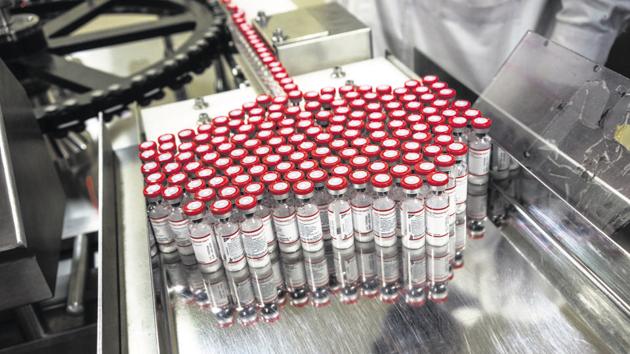Develop a vaccine plan | HT Editorial
From supplies to distribution, there will be real challenges
After nearly 20 million infections, 730,000 deaths and half-a-year of living with Covid-19, it is clear that vaccines are the strongest bet for the world to emerge out of the pandemic. The scientific community has given us six promising candidates. They are tearing through a process of trials, involving tens of thousands of people, generating reams of data, to prove they are a safe and effective bet — so much so that some of the biggest economies have put billions of dollars worth of wagers on them. India is yet to count as one of these nations. India’s seeming reluctance with pledging money at this point to any of the candidates is backed by some economic and scientific wisdom: Vaccines take years to develop, and seven months is too short a time to commit millions of dollars for a country with stretched coffers. Officials have hinted that the country was looking at multilateral mechanisms such as the World Health Organization-led Covax facility to help secure supplies. But such a mechanism — designed as it is to ensure distribution is equitable across the world — will be able to supply only a fraction of India’s requirement in the immediate term.

Last week, the government appeared to recognise the need to step up focus on its vaccine plan, forming an expert committee to identify viable candidates, put in place a financing and purchase strategy, and lay down a road map of administering it to the Indian public. The first step of this will involve opening bilateral discussions with developers such as AstraZeneca, Moderna, Pfizer and others which have the most promising candidates yet. These are also companies on which the United States (US), United Kingdom and some European nations have bet millions of dollars (the US alone has pledged nearly $4 billion). The deals won’t be easy; India will need to negotiate the lowest of the rates and secure supply commitment for the largest of volumes.
Once that is taken care of, the authorities will face the challenge of identifying those who will get the shots at the soonest. Health workers are an obvious first choice, but beyond that lie complicated equations determined by factors such as age, profession, geography and economic class. It will also involve mobilisation of its formidable grassroots staff, but they are already the most prepared, working tirelessly to carry out the process of testing and contact tracing. It is important, then, that India begins taking the first step, of securing supplies, at the soonest.






